Decriminalization of marijuana opens doors for some scientists
A growing interest in cannabis has led to new career opportunities
This originally appeared at https://www.nature.com/immersive/d41586-022-01761-5/index.html
Here’s an odd job in science: on a regular basis, Natasha Mason, a psychopharmacology postdoctoral researcher at Maastricht University in the Netherlands, offers cannabis to her study participants. They get the drug for free — but there’s a catch. They have to puff their vapourizers while lying in a magnetic resonance imaging (MRI) machine. In most of the world, marijuana remains illegal for both recreational and medical purposes, but in this laboratory, which also studies the acute impacts of psychedelic mushrooms and LSD, cannabis is a basic material for science.
Roughly 4% of the world’s population has used cannabis in the past year, so studying the effects of the drug matters on a global scale. As regulations continue to relax — the United Kingdom legalized medical cannabis in 2018, and, in April, New Jersey became the 18th US state to legalize it for recreational use — the opportunities for research into the drug are bound to expand.
Unanswered questions about cannabis could occupy scientists for many years to come, says Chad Johnson, a medicinal chemist and co-director of the two-year master’s programme in medical cannabis science and therapeutics at the University of Maryland School of Pharmacy in Rockville — the only programme of its kind in the country. The topics range from its biochemistry and potential therapeutic applications to its public-health impacts and surrounding policy issues. “We’re seeing a boom of interest in the field,” he says. “It’s catching fire.”

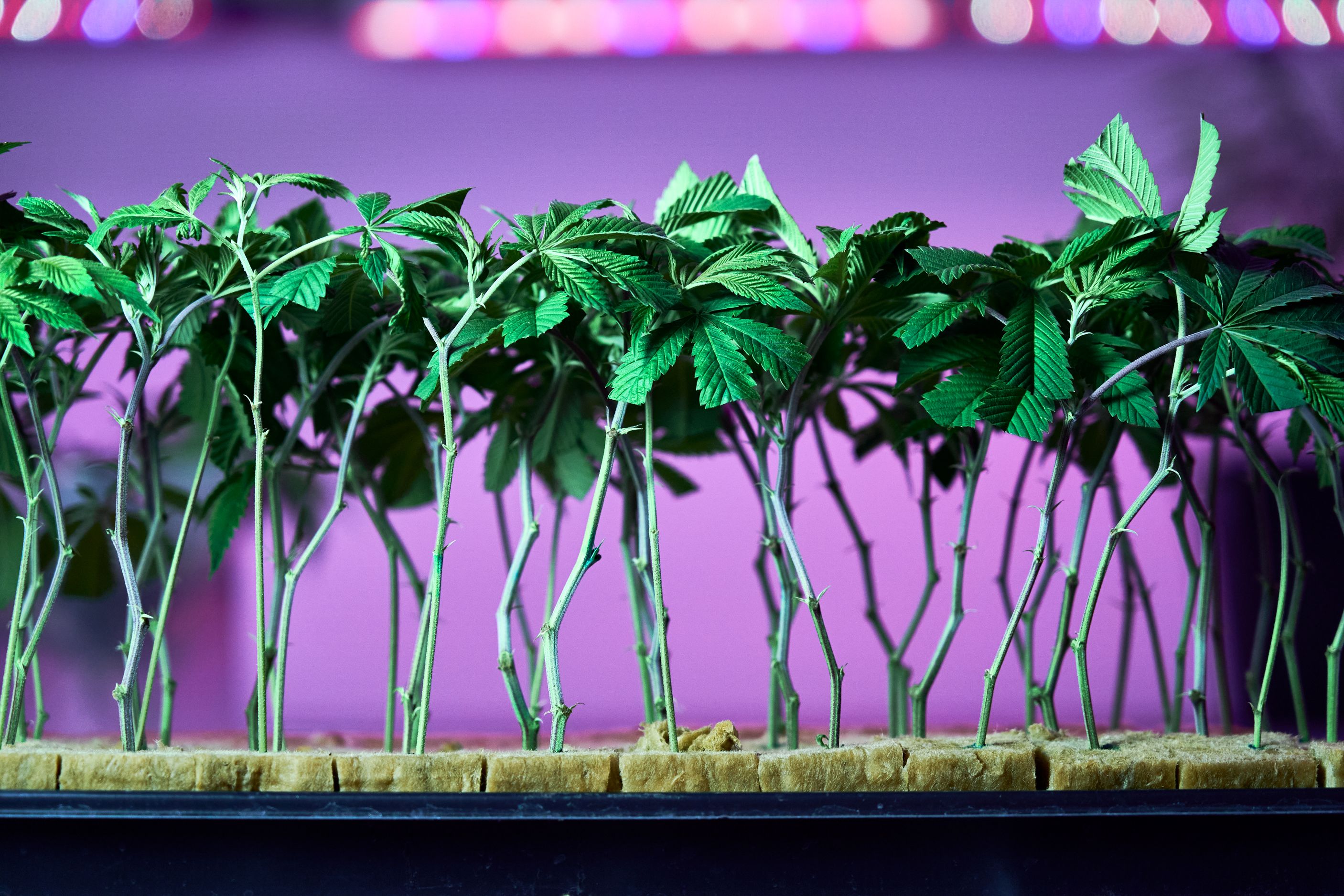
Cannabis plants are cloned — or grown from cuttings, rather than seeds — to standardize their development, so reliable material for use in research and medical settings can be obtained.
Many opportunities
Junior researchers who are interested in cannabis careers have many paths to consider, including academia, industrial cultivation and government policy and regulation, Johnson says. Whichever path they choose, they’ll have to navigate a field that is complicated by legal issues, social stigma and increasing job competition. Still, for researchers with the right training and aptitude, there’s serious potential in pot.
Javier Varela, a researcher and chief operating officer at Fotmer Life Sciences in Canelones, Uruguay, has made a career out of cannabis cultivation for scientific and medicinal purposes. In 2013, Uruguay became the first country in the world to fully legalize recreational cannabis, giving it a head start in a market that now spans much of the world: legal sales of marijuana are expected to exceed US$26 billion globally in 2023. Varela, who has a PhD in biochemistry, explains that growing cannabis for research or medicinal purposes is a significant challenge. “With a medicinal plant, the main concern is standardization,” he says. Scientists and doctors alike need assurance that every dose has a consistent and predictable level of the relevant compounds, he explains. To accomplish this, he tracks around 30 bioactive components, including the psychoactive compound tetrahydrocannabinol (THC), cannabidiol and terpenes, the volatile compounds that give cannabis its distinctive smell.

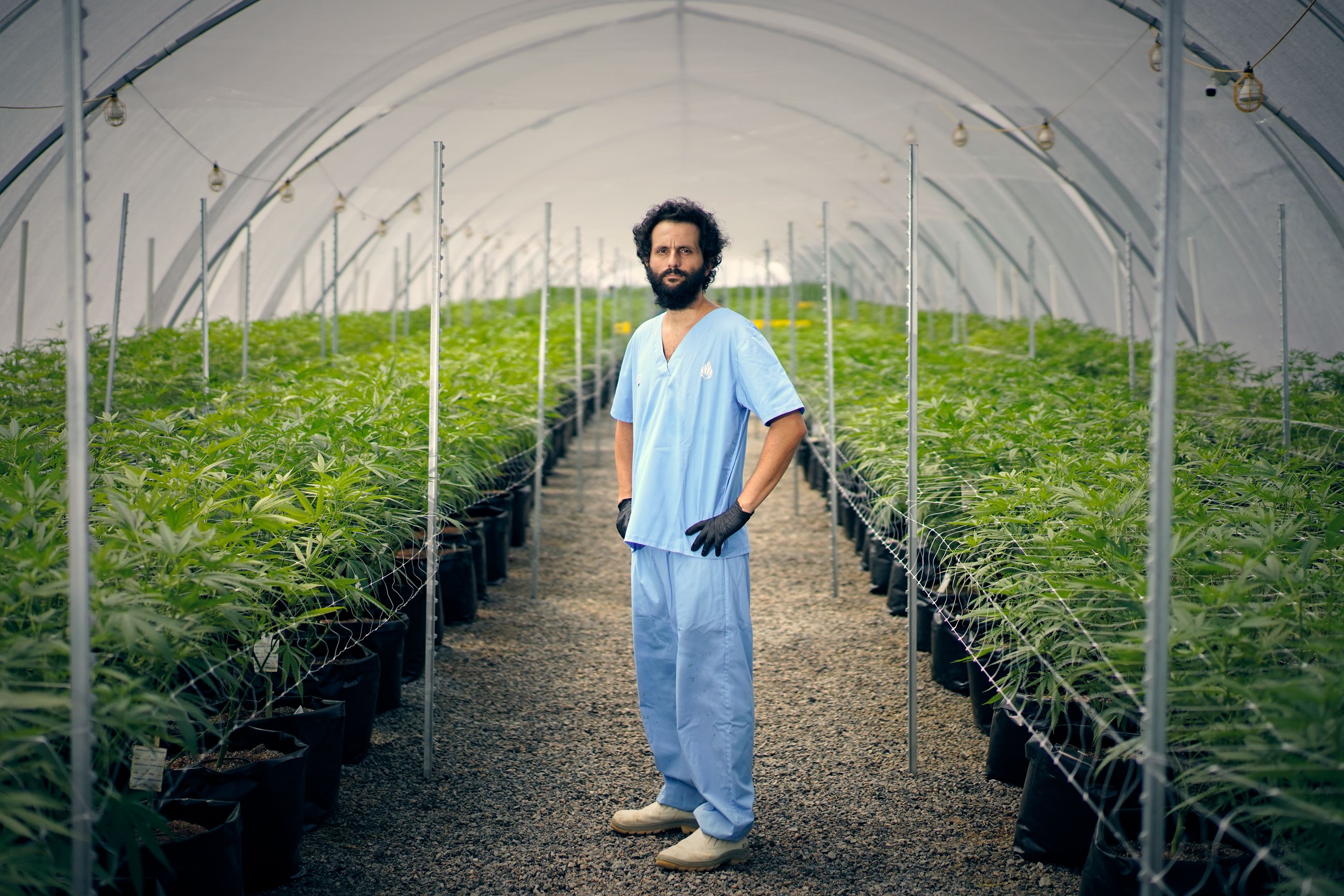
Javier Varela stands among the plants at the Fotmer facilities in Nueva Helvecia.

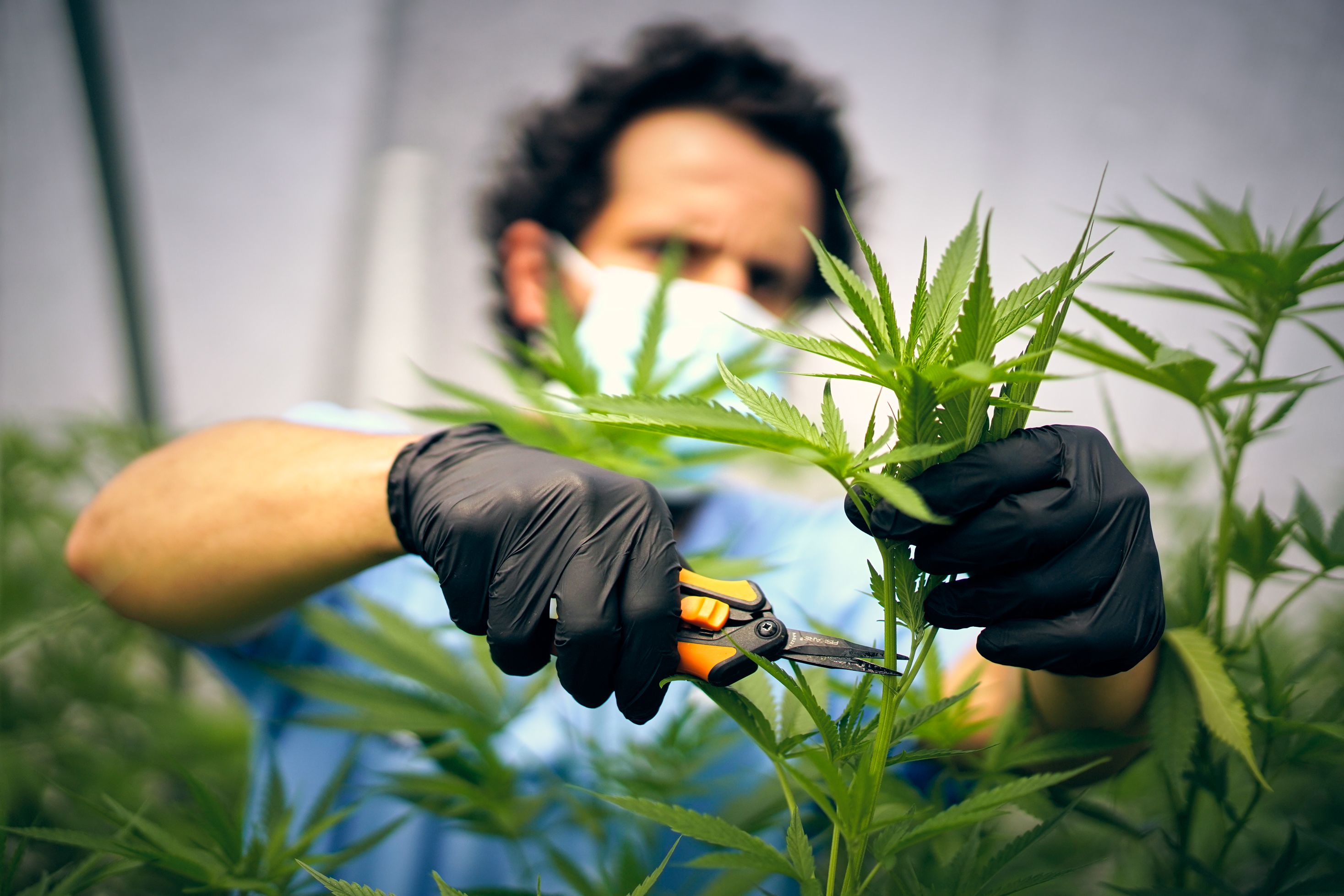
Varela prunes the plants to maximize the development of new branches.

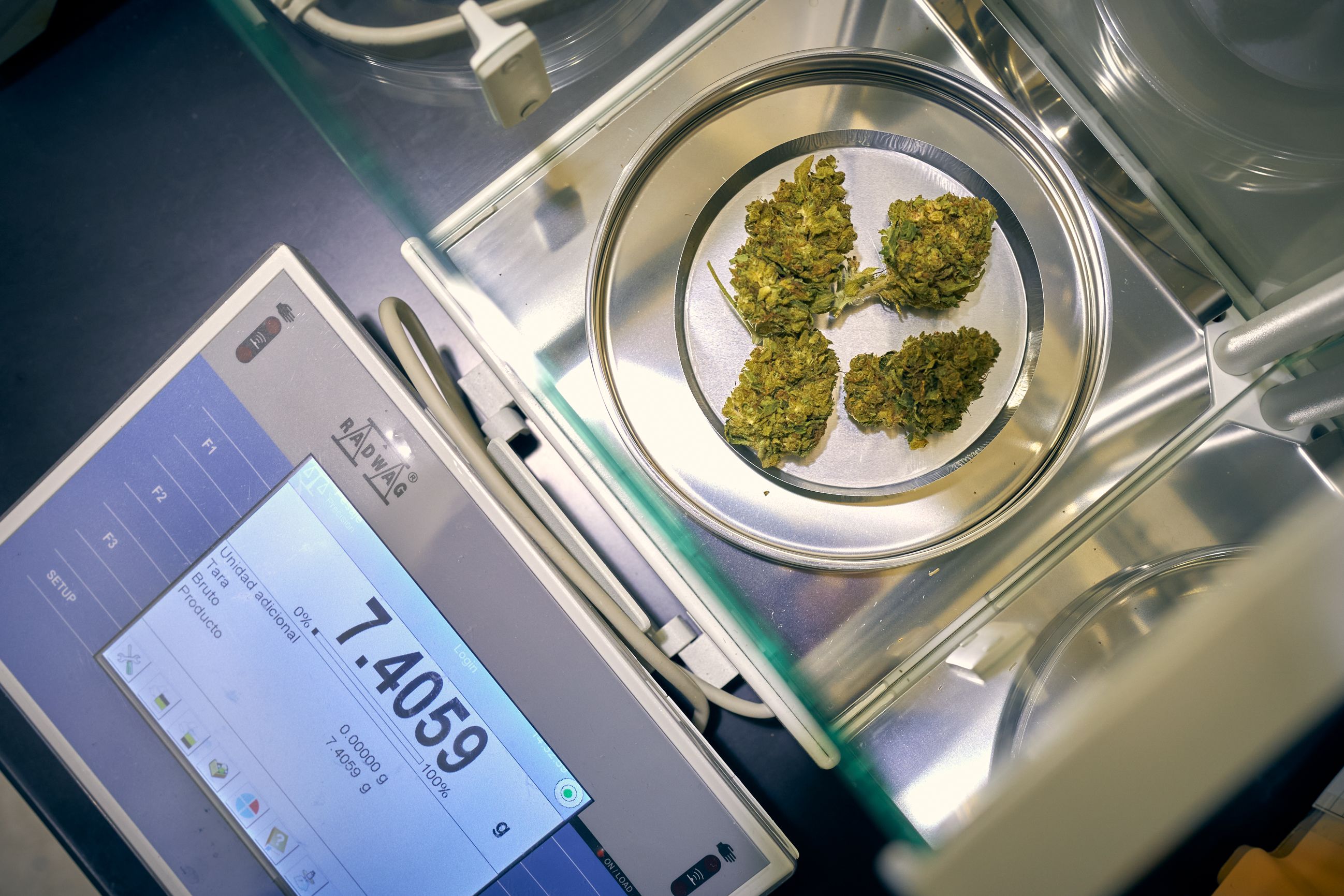
Cannabis samples are milled and weighed, to prepare them for cannabinoid content quantification.

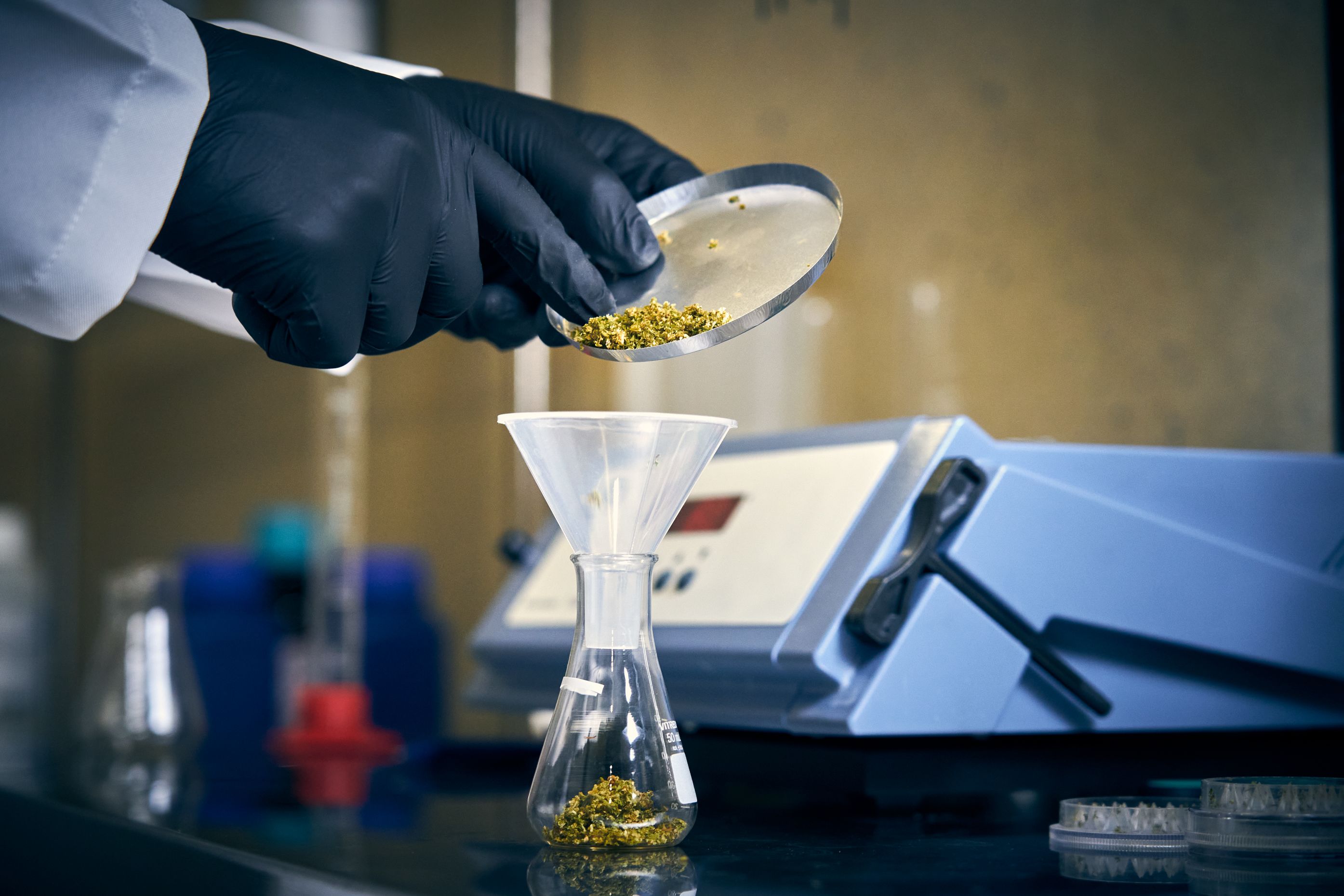
The cannabis samples are precisely weighed.
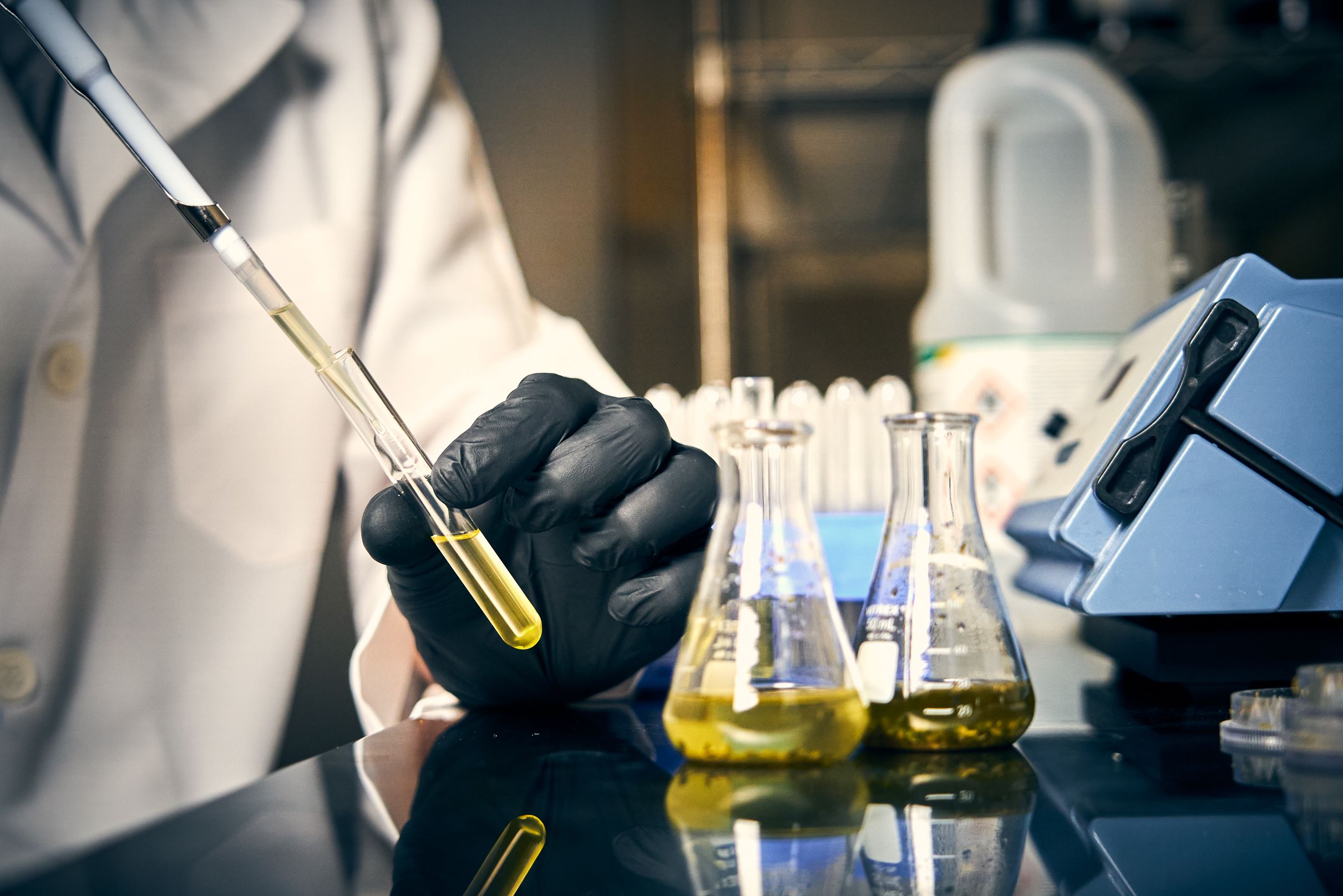
The samples are diluted, and the dilution is analysed for cannabinoid content.

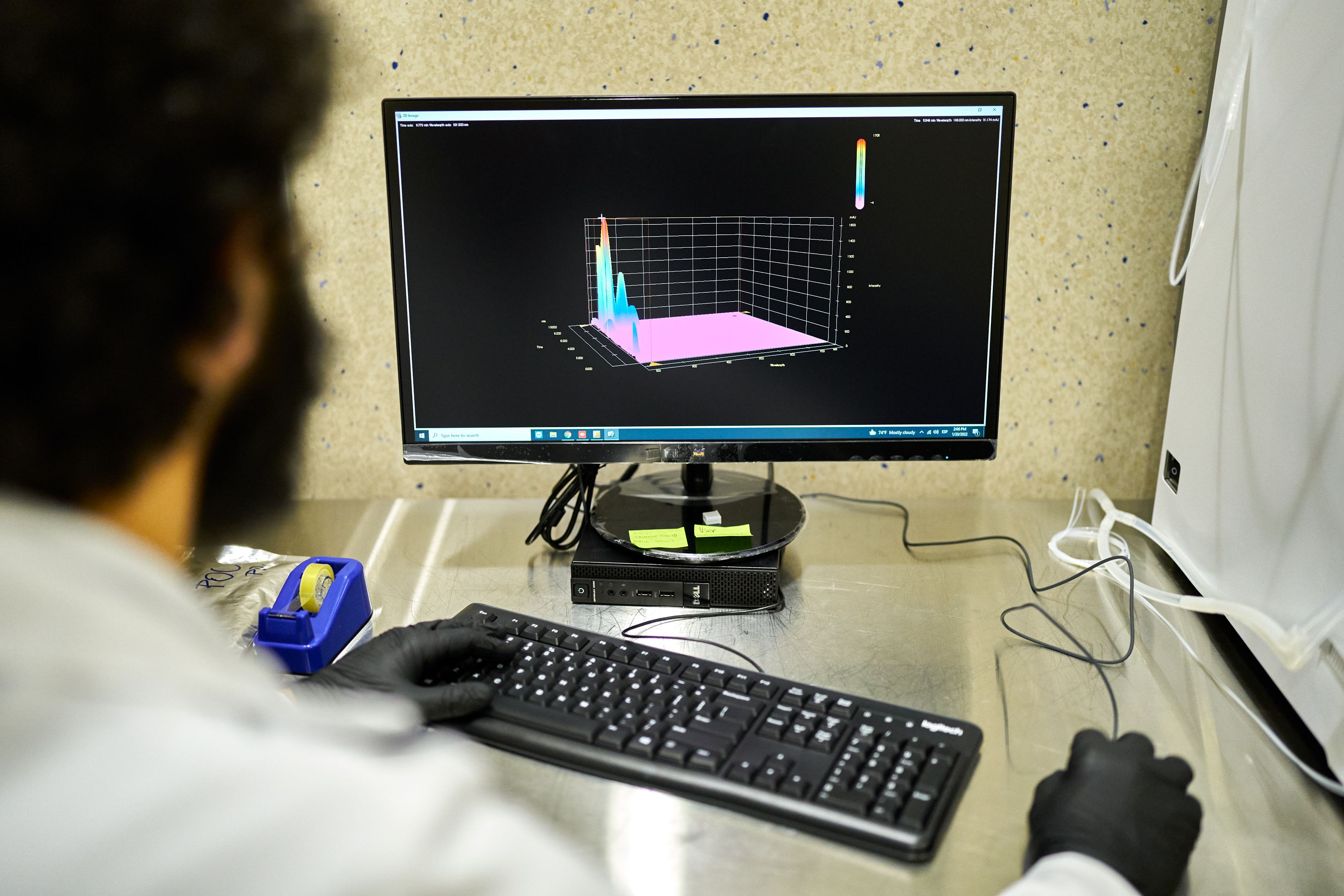
Varela analyses data obtained from the previous steps.

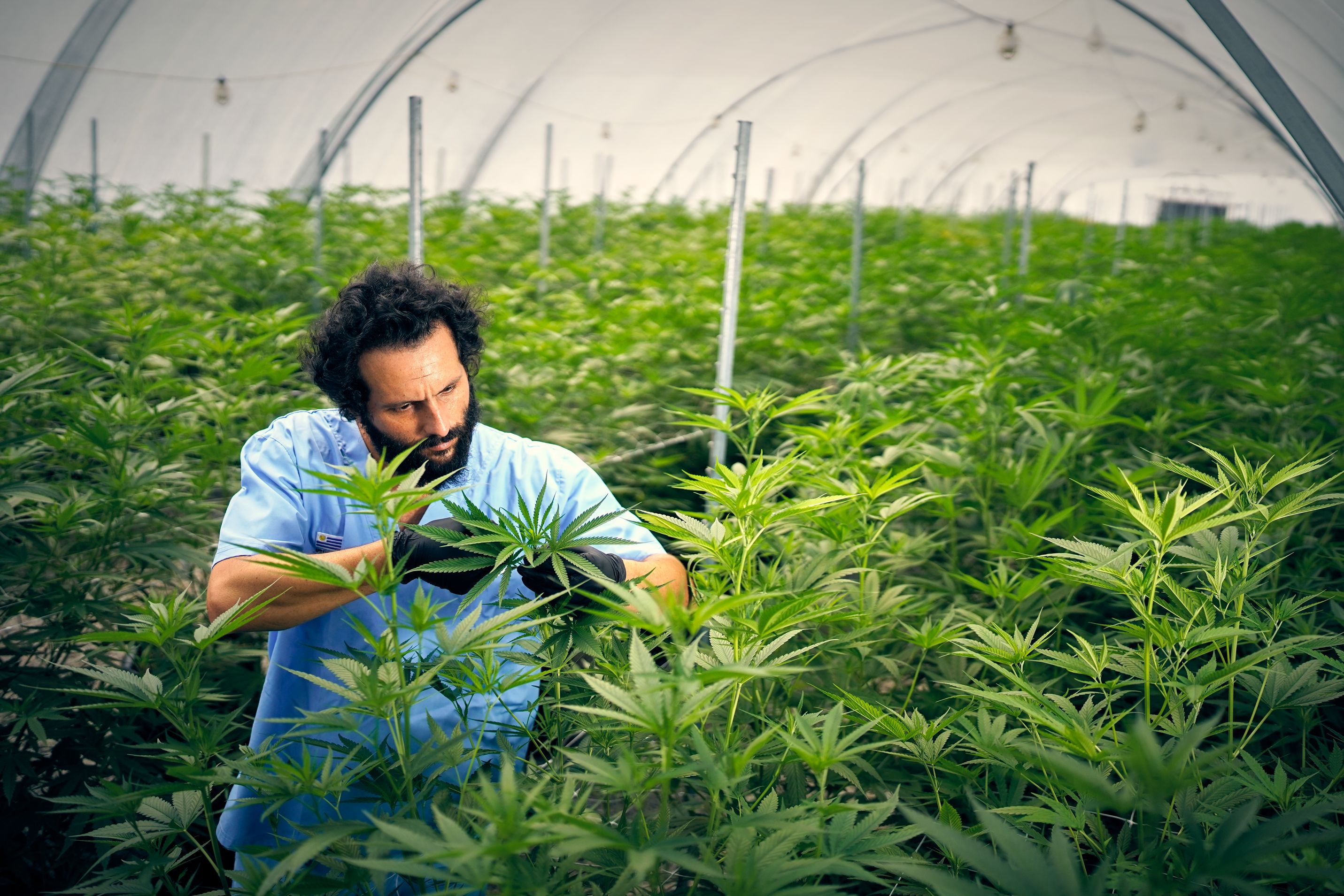
Varela prunes the plants.
Through plant cloning (growing plants from cuttings instead of seeds), meticulous control of greenhouse conditions and frequent chemical analysis using gas chromatography, nuclear magnetic resonance spectroscopy and other methods, Varela and his coworkers ensure that all the plants are functionally identical, regardless of the time of year they are harvested. Varela says the company has established collaborations with university labs in Uruguay and beyond. He worked closely with researchers in Uruguay and the United States for a 2020 laboratory study1 suggesting that extracts of Cannabis sativa can protect low-density lipoprotein (LDL) cholesterol — the ‘good’ cholesterol that helps to lower the risk of heart disease — against oxidation. Such industry–academia collaborations should be a hallmark of cannabis research, he says.
When Varela was a PhD student, he realized he was more interested in plant-based compounds than in anything that can be synthesized in a lab. The compelling task for a biochemist, he says, is finding the best ways to optimize the compounds found in nature for human use. After studying the antiparasitic properties of Aristeguietia glutinosa, a flowering plant native to the rainforests of Ecuador, he says he found his calling in cannabis, a plant that was already widely used in his home country of Uruguay.
Cannabis also appealed to Elle Wadsworth, a postdoctoral researcher in public health with dual appointments at the University of Waterloo, Canada, and the Canadian Centre on Substance Use and Addiction in Ottawa. Wadsworth studies the real-world impacts of cannabis policies, including how legalization for adults affects use in minors. The constantly shifting policy landscape in Canada and elsewhere should create many more research questions and career opportunities, she says.
“It’s a drug that can still do harm,” Wadsworth says, including compulsive use and potential short- and long-term cognitive impairment. “Public health should still be at the forefront of everyone’s minds.” She adds that the overarching challenge for public-health researchers and policymakers is discouraging illicit cannabis use and moving people to legal, safer and more regulated use without encouraging abuse and misuse. “It’s a tricky balance.”
“We need to make sure the general public is better versed in what medical marijuana is.”
Responsible use
Preventing overuse is one of the ultimate goals for Mason, who focuses much of her cannabis research on the phenomenon of tolerance. Whether people use the plant for recreation, pain relief or another reason, they tend to lose sensitivity to the active compounds over time and start to need larger doses to get the same effects. Mason and her team use functional MRI to track the immediate brain impacts of cannabis in both daily and infrequent users. The studies are placebo-controlled, which means some participants in the MRI tubes are actually inhaling inert hemp vapour, which has no THC. Mason co-authored a 2021 paper2 in Nature Reviews Neuroscience that summarized the latest findings on neurological impacts of THC, including a link between tolerance and diminishing activity of key receptors in the brain. Ultimately, she says, a better understanding of tolerance should help users and their doctors to tailor doses to get the desired effects, with fewer diminishing returns.
That paper also addressed the tricky issue of measuring impairment in cannabis users. As Mason explains, there is currently no cannabis assessment that is equivalent to the breathalyser or sobriety tests used to see whether people are too impaired by alcohol to drive — a shortcoming with many potential consequences for cannabis laws and public safety. Without such tests, some people who are too impaired to drive safely could go unnoticed.
In the curing room, González monitors some of the cannabis. Another researcher rotates plants in the background, to ensure they are all exposed to the same conditions.
González places filters with cannabis samples into the drying oven to determine their moisture content.
González weighs the cannabis sample after it is dried to determine its moisture content, so the sample can progress through the packing process.
In a quality-control check, González looks for foreign content in the samples.
There’s plenty of room for more cannabis researchers, Mason says, especially those with the right preparation. “My advice would be get experience in another field first,” she says. “You could train in cognitive neuroscience, hone your statistics, or learn how to code. If you want to get into the therapeutic area, you could go to medical school first and then take a postdoctoral position in a lab.” But not all backgrounds are equally in demand, she says. In particular, cannabis research has already attracted a large number of scientists with a background in psychopharmacology. “You can really get ahead and make a name for yourself if you bring something the field is lacking. That would be anything other than psychopharmacology.”
The more than 450 students currently enrolled in the cannabis master’s programme at the University of Maryland School of Pharmacy bring a wide variety of skill sets, Johnson says. He estimates that about half of the students have a science background, including doctors and nurses who want to add to their therapeutic repertoire. The programme, which was launched in 2019, has attracted lawyers, growers and policy advocates working in nearby Washington DC. After graduating, they go on to an equally wide variety of pursuits, including PhD-level research or work in analytical labs or cultivation centres. Johnson adds that training in cannabis research and policy could leave students well-prepared to work with other substances, including psychedelic drugs.
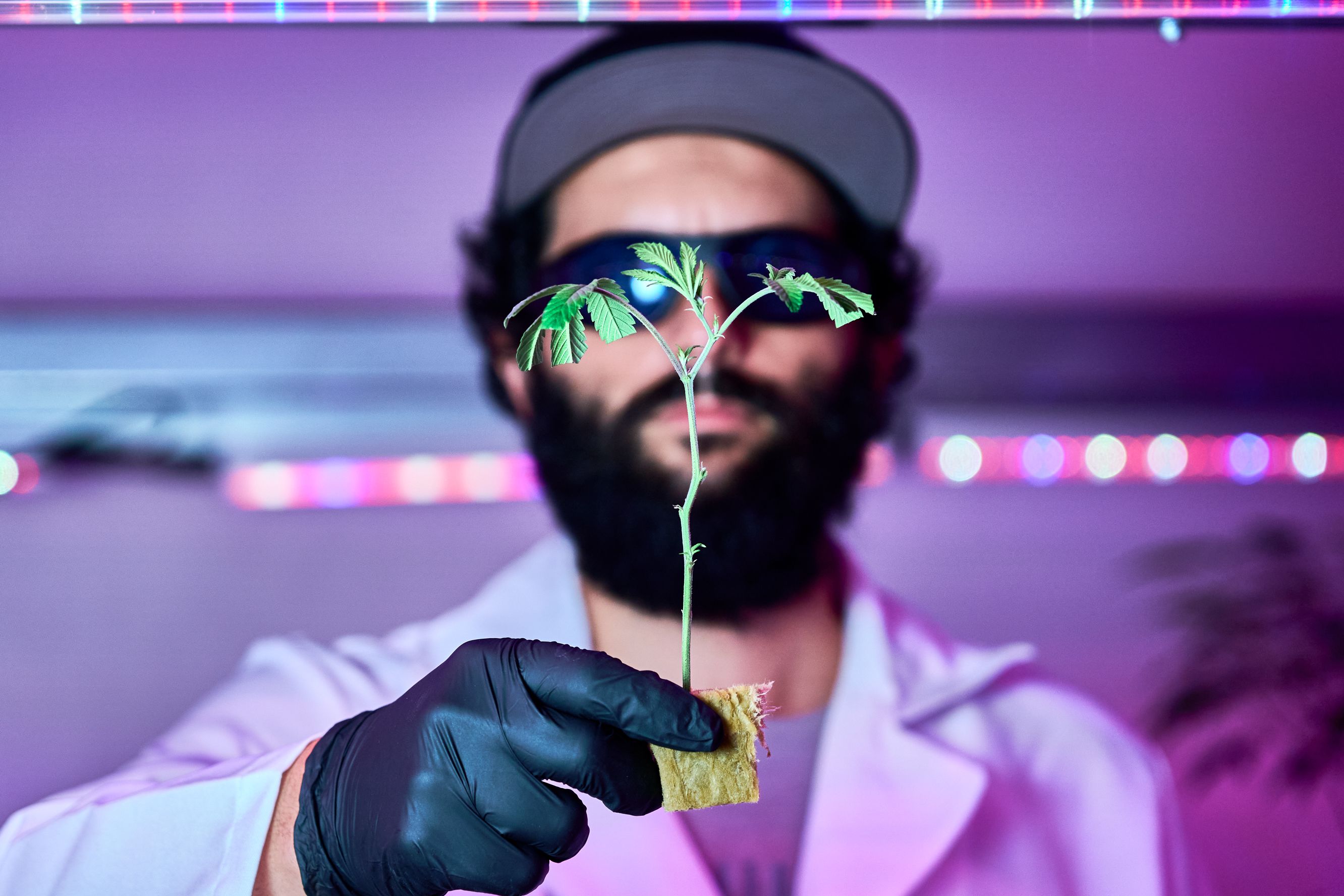
Varela prepares cuttings that will be propagated into new plants.
For now, the programme essentially has a monopoly on cannabis degrees in the United States, but Johnson says he hopes other schools will develop their own cannabis curricula. “For [cannabis] to be legitimized, we need more people jumping on board,” he says. “We need to make sure students and medical professionals and the general public are better versed in what medical marijuana is, how it can be used, and how it can be dosed.”
Mason says that cannabis research, like cannabis itself, is broadly accepted in the Netherlands. For example, In 2021, the Dutch Health Ministry announced a €1.4-million (US$1.5-million) grant to support research of cannabis for the treatment of epilepsy in children. It’s a long way from her own childhood in the United States, where she says the message at school was that “if you use drugs you’re going to die”. Still, she says, she has run into some dismissive scepticism at international conferences. “People say, ‘You’re studying what?’ They think we’re just hippie researchers, sitting around smoking pot with our participants.”
Varela says that much of the stigma around cannabis research is already fading. He says he faced some scepticism earlier in his career. “When I presented projects to funders, some would say, ‘What? You want to work with drugs?’ Now it’s much more positive,” Varela says. “They see cannabis as an opportunity.”
Nature 608, 227-228 (2022)
doi: https://doi.org/10.1038/d41586-022-01761-5
